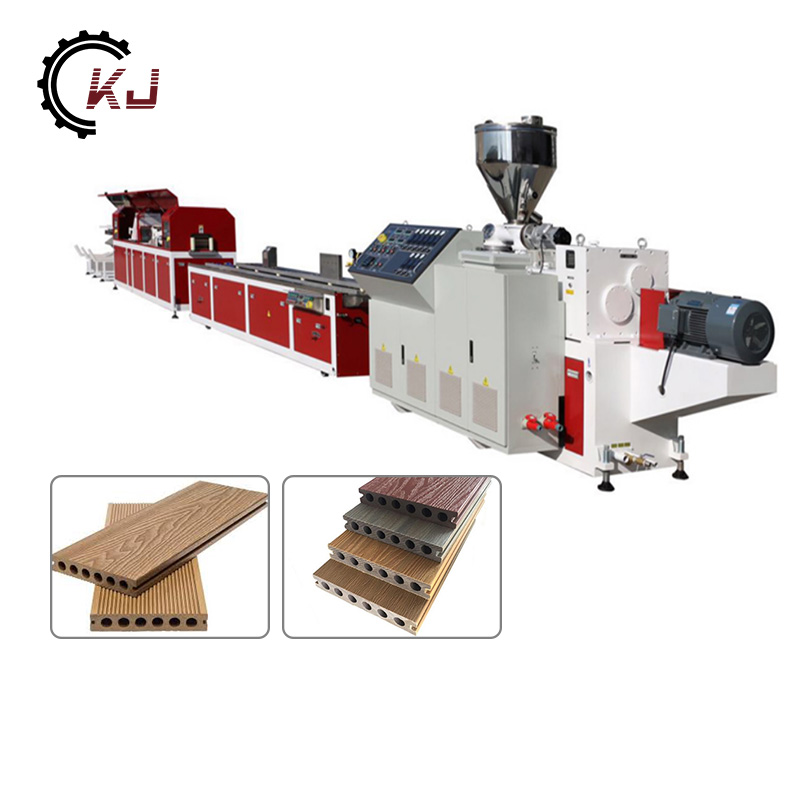What Are Plastic Extruders and How Do They Revolutionize Manufacturing?
2025-01-06
In the world of modern manufacturing, plastic extruders play a crucial role in shaping the plastic products we use every day. From food packaging and automotive parts to household goods and medical devices, the process of extrusion is an integral part of creating plastic components. But what exactly is a plastic extruder, and why is it so important to the manufacturing industry?
In this blog, we’ll delve into the workings of plastic extruders, explore their applications, and understand how this technology has revolutionized plastic production across various industries.
What Is a Plastic Extruder?
A plastic extruder is a machine used to process plastic materials by forcing them through a die to create continuous shapes or profiles. The process, known as extrusion, involves melting plastic pellets or granules and pushing the molten material through a mold or die, which gives the plastic its desired shape. The extruded plastic is then cooled, hardened, and cut into the desired length.
The process of extrusion is used to create a wide variety of plastic products, such as pipes, sheets, films, and profiles. The versatility and efficiency of plastic extruders make them a staple in many industries that rely on plastic components.
How Do Plastic Extruders Work?
The operation of a plastic extruder can be broken down into several key steps:
1. Feeding the Plastic Material:
The extrusion process begins with feeding plastic pellets or granules into the hopper of the extruder. These raw materials are typically made from thermoplastic polymers, which can be melted and re-molded multiple times.
2. Melting the Plastic:
Once the plastic material enters the extruder, it is fed into a barrel that contains a rotating screw. As the screw turns, it pushes the material through the barrel while simultaneously applying heat. This heat causes the plastic to melt, transforming it into a viscous, molten form.
3. Shaping the Plastic:
The molten plastic is then forced through a mold or die, which determines the final shape of the product. The die can be customized to produce a wide range of shapes, such as hollow tubes, flat sheets, or intricate profiles.
4. Cooling and Hardening:
After the plastic passes through the die, it is cooled and solidified, either by air or water cooling systems. Once the plastic has cooled to the desired temperature, it is cut into the required length or wound into rolls, depending on the application.
5. Finishing:
In some cases, the extruded plastic product may undergo further processes, such as trimming, polishing, or surface treatment, to enhance its appearance and functionality.
Types of Plastic Extruders
There are several different types of plastic extruders, each designed for specific applications:
1. Single-Screw Extruders:
Single-screw extruders are the most common type of plastic extruder and are used for producing a wide variety of products. They consist of a single screw inside a barrel that melts and pushes the plastic through the die. Single-screw extruders are ideal for producing products that require a simple, continuous shape, such as plastic pipes or sheets.
2. Twin-Screw Extruders:
Twin-screw extruders feature two intermeshing screws inside the barrel, which provide better mixing and higher processing power. These extruders are ideal for applications that require more precise control over the material properties, such as compounding, blending different polymers, or creating complex profiles. Twin-screw extruders are commonly used in the production of more advanced plastic products, such as specialty films and medical devices.
3. Co-Extruders:
Co-extruders are used to create multilayer products by feeding different types of plastic materials into separate extruders and then combining them into a single product. For example, co-extrusion can be used to produce multi-layered food packaging films, which provide enhanced barrier properties. Co-extruders allow manufacturers to optimize the material properties of each layer for improved performance.
Benefits of Plastic Extruders
Plastic extruders offer numerous advantages that make them indispensable in modern manufacturing:
1. High Efficiency:
Plastic extrusion is a continuous process, meaning it can produce large volumes of plastic products quickly and with minimal waste. The ability to extrude plastic continuously also makes it highly efficient for mass production, reducing production costs and improving overall productivity.
2. Versatility:
One of the key benefits of plastic extruders is their versatility. They can be used to produce a wide range of products, from simple pipes and sheets to complex profiles and custom shapes. This versatility allows manufacturers to meet the demands of various industries, including construction, automotive, packaging, and medical sectors.
3. Cost-Effective:
The high efficiency and low material waste associated with plastic extrusion make it a cost-effective manufacturing method. Additionally, the ability to use a variety of raw materials and additives helps optimize production costs. The continuous nature of the process also means that less labor is required compared to other manufacturing methods, further reducing costs.
4. Customization:
Plastic extruders allow for the customization of plastic products in terms of size, shape, color, and material properties. Dies and molds can be designed to meet specific requirements, ensuring that each product meets the necessary specifications. This level of customization makes extrusion ideal for industries that require tailored solutions, such as the medical or automotive industries.
5. Environmental Benefits:
Since plastic extrusion is a continuous process, it minimizes material waste, making it more environmentally friendly than some other manufacturing methods. Additionally, many plastics used in extrusion are recyclable, meaning that products can be recycled at the end of their life cycle, contributing to sustainability efforts.
Common Applications of Plastic Extruders
Plastic extruders are used in a wide variety of industries to produce both simple and complex plastic products. Some of the most common applications include:
1. Pipes and Tubing:
Extruders are widely used in the production of plastic pipes and tubing for a variety of applications, including plumbing, irrigation, and industrial systems. The continuous nature of the extrusion process ensures that pipes can be produced in long lengths, minimizing joints and improving the overall strength of the pipes.
2. Films and Sheets:
Plastic extruders are used to create plastic films and sheets, which are essential in packaging, insulation, and construction. Films are often used in food packaging, while sheets are commonly used for protective covers, display materials, and signs.
3. Profiles and Moldings:
Complex plastic profiles, such as window frames, trim, and weather stripping, are produced using plastic extruders. These profiles are often custom-designed and are essential in industries such as construction and automotive manufacturing.
4. Wires and Cables:
The wire and cable industry relies on plastic extruders to create the insulation around wires and cables. This insulation helps protect the wire from environmental factors, such as moisture and heat, while ensuring safety during operation.
5. Automotive Parts:
Plastic extruders are used to produce a variety of automotive components, such as door seals, trim pieces, and weather-resistant strips. These parts need to be durable, lightweight, and resistant to environmental stress, making plastic extrusion an ideal manufacturing method.
6. Medical Devices:
Plastic extrusion is also used in the production of medical devices, such as catheters, tubing, and other critical components. The precision and cleanliness of the extrusion process are crucial in ensuring that these products meet strict safety and performance standards.
Conclusion: The Future of Plastic Extrusion
Plastic extruders are essential tools in the manufacturing of a wide variety of products, offering benefits such as high efficiency, versatility, and cost-effectiveness. The continued advancements in extrusion technology are helping manufacturers meet the growing demands for customization, sustainability, and performance in their products.
As industries continue to evolve and new materials are developed, plastic extrusion will undoubtedly remain a cornerstone of modern manufacturing, enabling the creation of innovative and high-quality plastic products that shape the way we live and work.
With the increasing emphasis on sustainability, the ability to recycle plastic and minimize waste in the extrusion process makes this technology an environmentally conscious choice for future production needs. Whether in construction, automotive, packaging, or medical sectors, plastic extruders will continue to play a pivotal role in shaping the future of manufacturing.



